We're an affiliate
We hope you love the products we recommend! Just so you know, we may collect a share of sales or other compensation from the links on this page at no additional cost to you. Thank you if you use our links, we really appreciate it!
So, you recently brought a Pomeranian – also known as ‘Pom’ into your household, or are you considering getting one? Read on to discover everything you need to know about Pomeranians.
Pomeranians have consistently ranked among the top 20 dog breeds in the US, UK, and Canada according to data from the respective Kennel Club registries.
You may wonder why these small-sized canines have won the hearts of many dog enthusiasts around the world but worry no more.
Poms are cherished by many because of their sweet personalities, average exercise needs, and loyalty to their human caregivers which makes them a perfect canine companion.
Stick with us to the end to discover the ‘royal’ history of Pomeranian dog breeds, their physical characteristics, temperament, exercise, and grooming needs among other attributes.
What Is a Pomeranian? – Brief History of Pomeranians
Pomeranians are named after the central Europe regions of ‘Pomerania’ which spans between modern-day Germany and northern Poland.
Many people believe that Poms have evolved through various areas of Europe with no direct breeding relation to Pomerania. They were also historically identified by several other names.
The early Pomeranians came from the larger German Spritz family dogs, who were originally bred for their strength and endurance, to perform various tasks as working dogs.
Queen Charlotte is credited with starting the influence of this breed after she brought two Pomeranians (Phebe and Mercury) to England in the year 1767.
It wasn’t until 1888 that Queen Victoria brought her first Pomeranian named ‘Macro’ from Florence, Italy. The Monarch also brought in a white female Pom ‘Gena’ who weighed 7.5 pounds.
Many people across the UK saw the Queen’s unfiltered love for these tiny dogs, which boosted their popularity beyond measure.
Queen Victoria was interested in Pomeranians and she went ahead to breed a variety of colors to promote the glory of these toy breeds.
It is said that at one time during Queen Victoria’s reign, there were a total of 35 Poms in the royal kennel.
The American Kennel Club officially registered their first Pomeranians in 1900, which saw the establishment of the American Pomeranians Club.
5 Interesting Facts About Pomeranians
1. Pomeranians have 23 different colors and patterns
Many dog breeds have different color ranges that rarely exceed five, but Pomeranians have a total of 23 coat colors and patterns.
Some Poms have solid colors the common ones being orange, black, and brindle, while others are bicolored or tricolored with a combination of different patterns.
2. Many Pomeranian puppies will change color as they mature
You can expect many Pom puppies to change their coat color as they transit into adulthood. It is, however, not possible to know which one can change color and which one will not.
A Pomeranian puppy with a cream-colored coat may turn it into brown while a brown Pom could become bright orange as they get older.
3. Two Pomeranians survived the Titanic disaster
On board the maiden voyage of the Titanic in April 1912 were twelve dogs. But only three of them (two Pomeranians and one Pekingese) survived the tragic disaster.
The two lucky Pomeranians were owned by Mrs. Rothschild and Miss Margaret Bechstein Hays both of whom were also rescued by lifeboats during the disaster.
4. Pomeranians were popularized by Queen Victoria
Queen Victoria of England (24th May 1819 – 22nd January 1901) was a very popular monarch at the time, and she is credited for raising the glory of Pomeranians in the UK.
The Queen was usually spotted with her lovely Poms and she even had special compartments in her royal train where she placed them when traveling.
On her death bed, Queen Victoria requested that her favorite Pomeranian dog named Turi be placed beside her resting place as a show for the last respect.
5. Pomeranians can give birth to twin puppies
Even though most dogs can birth many puppies at once, it is a very rare phenomenon for them to deliver identical twins.
Pomeranian expectant mothers, or Pom dams, are known to deliver little twin poms.
Pomeranian puppy twins share the same umbilical cord even though each one of them is enclosed in an individual embryonic sac.
Pomeranian Puppies
Bringing a Pomeranian puppy into your household is a rewarding affair yet one that can prove to challenge some people.
It all boils down to how well you are prepared to house your new tiny breed dog and provide them with what they need.

The moment you step into your house with your new Pom, it’s highly likely that everyone will want to touch or hold the puppy. Make sure not to overdo it.
Be careful about toddlers and don’t allow them to handle these tiny pups without close supervision.
We suggest that you get a sizeable doggy crate for your little pup to protect them from harsh conditions and give them some sense of belonging.
A well-furnished dog crate cuts out a generous place for your little pup to stay comfortably without being overwhelmed by the massive size of the house.
Make sure to get enough bedding for your new Pom and place them on their bed to provide a cozy space for snuggling and sleeping.
Be careful about the collar you choose for your furry friend, because most of them can wear down the part around your Pom’s neck.
We, therefore, recommend you go for a fine-weight nylon martingale eight-inch lead with a chain to reduce the chances of wear and tear.
Pomeranian Types
The Pomeranian dog breeds are categorized based on their:
a) Size and weight
b) Facial features and appearance.
The following are the common official and unofficial types of Pomeranians:
1. Standard Pomeranian
The Standard Pomeranian is recognized by all major kennel clubs around the world, and they are the official breed that takes part in dog shows and competitions.
These purebred poms usually have a well-balanced body, pointed ears, a foxlike face, and a medium-length snout.
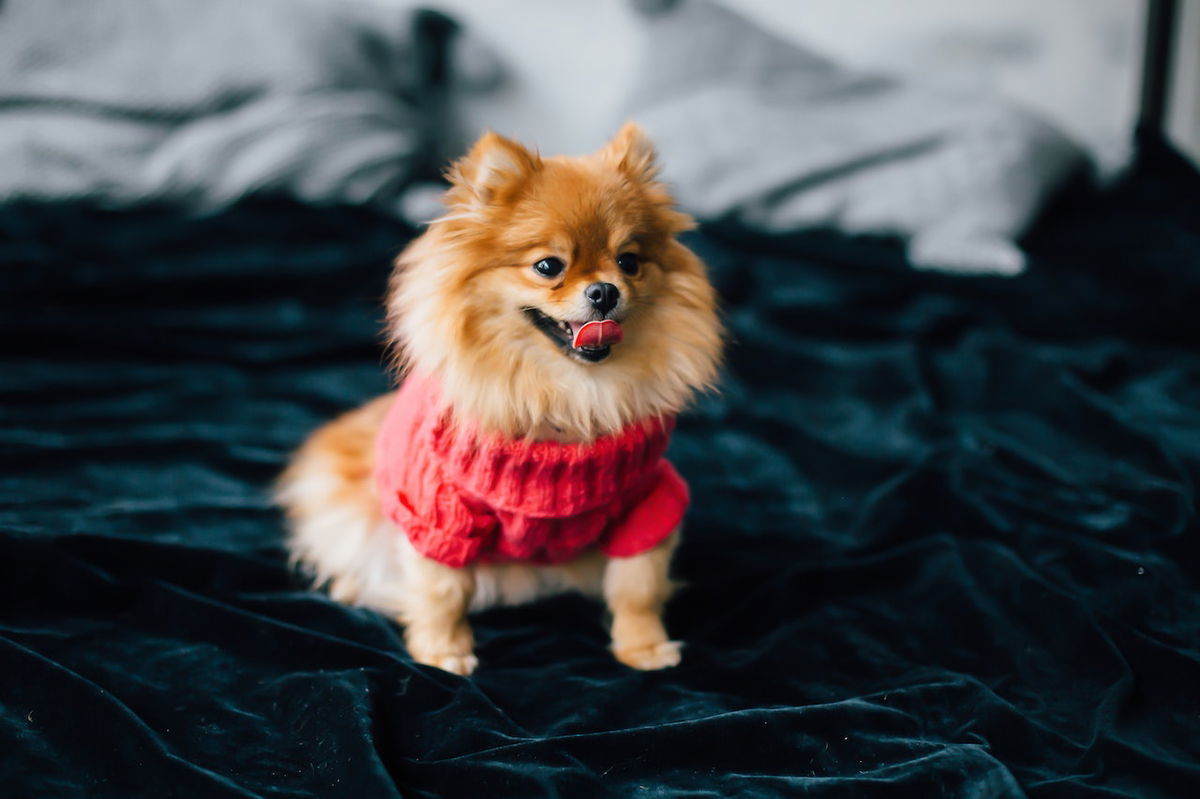
Standard Poms have wider eyes than those of a fox and they are covered by a double coat which comes in a variety of colors ranging from cream to orange to black.
Since the standard Pomeranians are the only ones accepted as purebred, they are carefully bred for their health and they are less prone to suffer the common conditions of other types.
2. Miniature Pomeranian
Miniature Pomeranians are considered the smaller version of the Standard Pomeranian and they are the most common unofficial poms.
These tiny pups have been shrouded with shady breeding practices used by unregulated breeders to make them smaller in an attempt to meet the demand for pocket-sized canines.
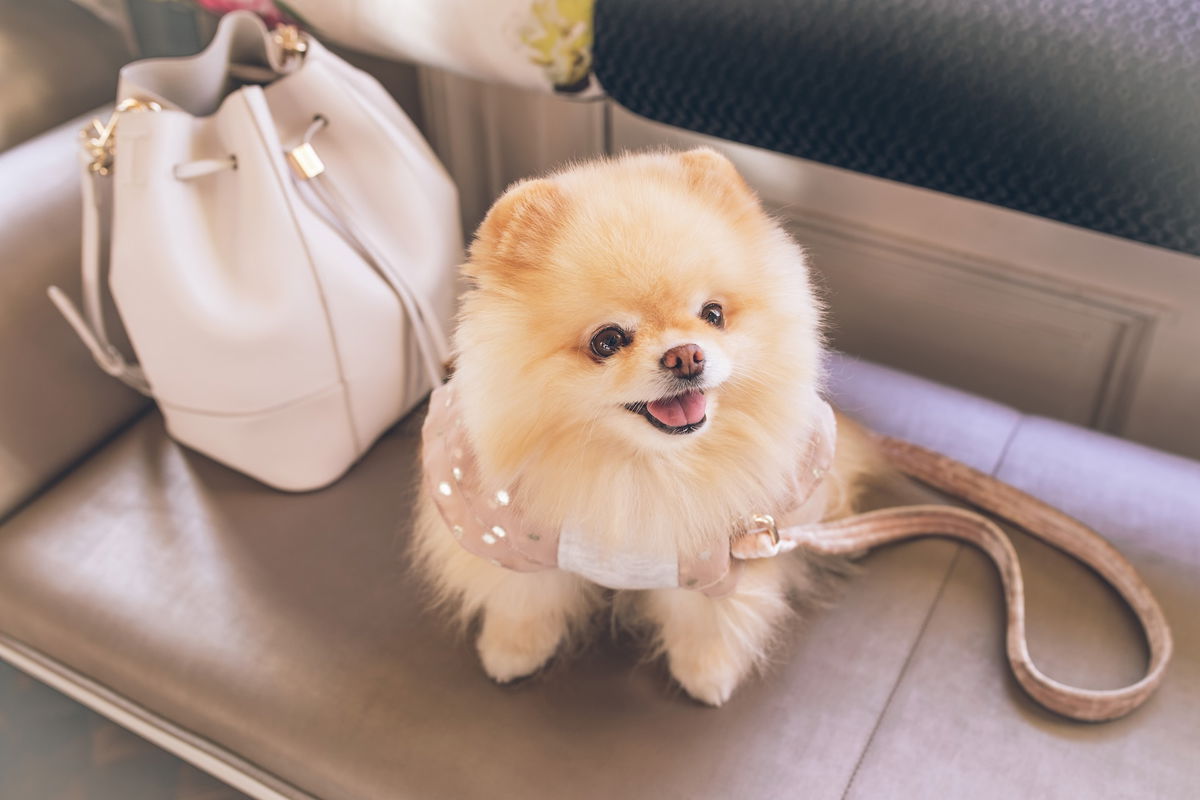
While it’s possible to find trustworthy breeders developing miniature poms, you need to know that they are at a greater risk of suffering breed-related health conditions.
3. Teddy Bear Pomeranian
The Teddy Bear Pomeranian is rightfully named after their teddy bear-like appearance. These Poms are bred for their short, round cute face, shorter snout, and large eyes closer to the muzzle.
One of the major challenges with the Teddy Bear Pomeranians is their shortened muzzle which makes them prone to a variety of health problems.

You need to be extra careful when adopting a teddy bear Pom because they aren’t recognized by AKC, and they also have brachycephalic snouts which predispose them to breathing problems.
4. Fox-faced Pomeranians
The Fox-faced Pomeranians have a more distinct foxlike appearance, with a longer snout, tapered muzzle, and alert, pointed ears.
The fox-faced Pomeranians are the only recognized face variation of this breed by the AKC standards.
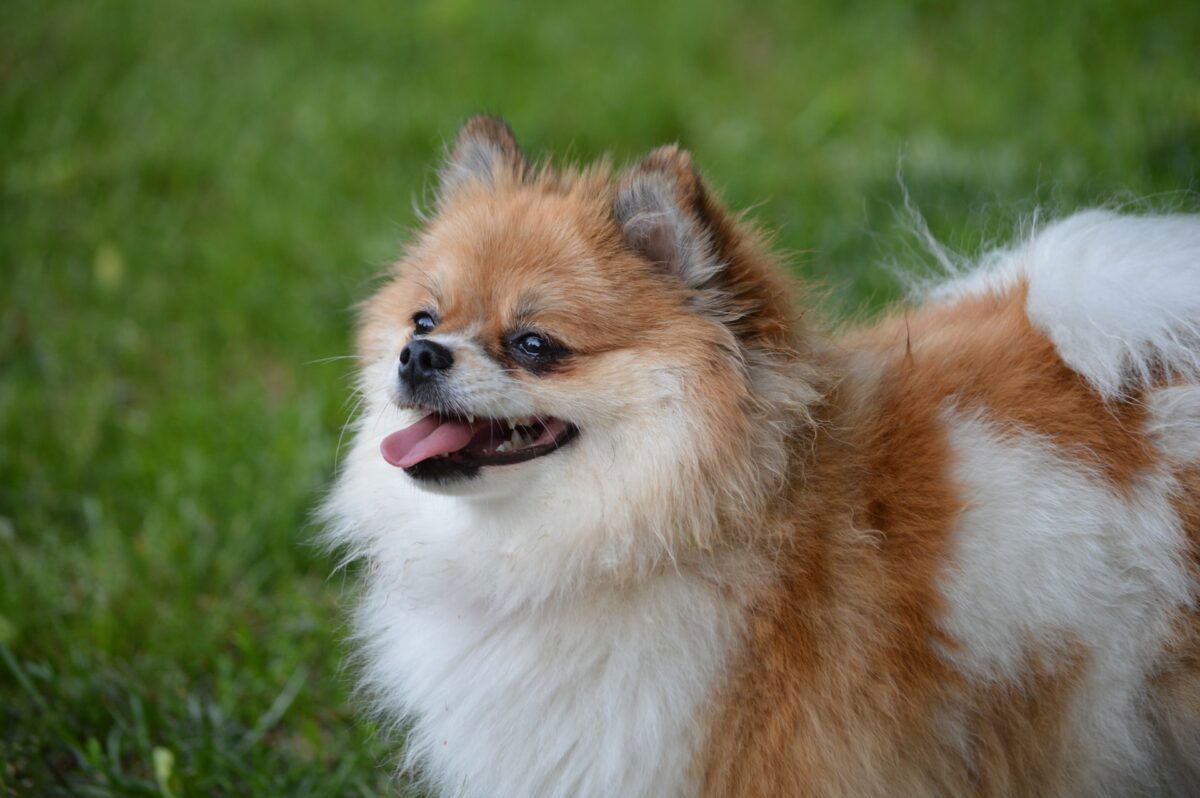
Some breeders produce these pups with much longer snouts than what the Pomeranian standards require.
It’s because of their longer snouts that these types of Poms are less prone to breathing problems compared to teddy bears or baby doll Pomeranians.
5. Baby Doll Pomeranian
Baby Doll Pomeranians are highly prized for their innocent faces which resemble a baby doll. They have small, dainty features with bright, and large expressive eyes.

Baby-doll Poms have shortened snouts than their fox-faced cousins, but not as little as those of the Teddy bear Pomeranians. AKC does not recognize these Poms in their breed specifications.
6. Teacup Pomeranian
The name “Teacup Pomeranian” is often used to describe exceptionally small miniature Pomeranians, even by Pomeranian standards.
These tiny dogs weigh less than three pounds and are typically smaller than the stipulated standard size Pomeranians.
Teacup Pomeranians are part of the modern-day trend to make very tiny dog breeds with more attention placed on their size, weight, and cuteness.
This is a concerning development because most breeders can only pay attention to the aesthetics of the Teacup poms without regarding their health and wellness.

Teacup Pomeranians can be prone to die prematurely since their internal organs do not develop properly with time.
Some of the common conditions for teacup dogs include heart diseases, breathing difficulties, patella luxation, low blood sugar, and hydrocephalus among others.
Teacup Pomeranians can thrice well when living in smaller spaces, such as apartments, since a huge homestead might be overwhelming for them.
7. Throwback Pomeranian
The Throwback Pomeranian harks back to the breed’s earlier, larger ancestors. These Poms are not recognized by AKC since they tend to be more substantial than the modern standards.
Throwback poms have a thicker body build which can resemble the spitz-type dogs who also had a wolf-like appearance.
They can excel in moderate working roles, thanks to their resilience and inbuilt energy.
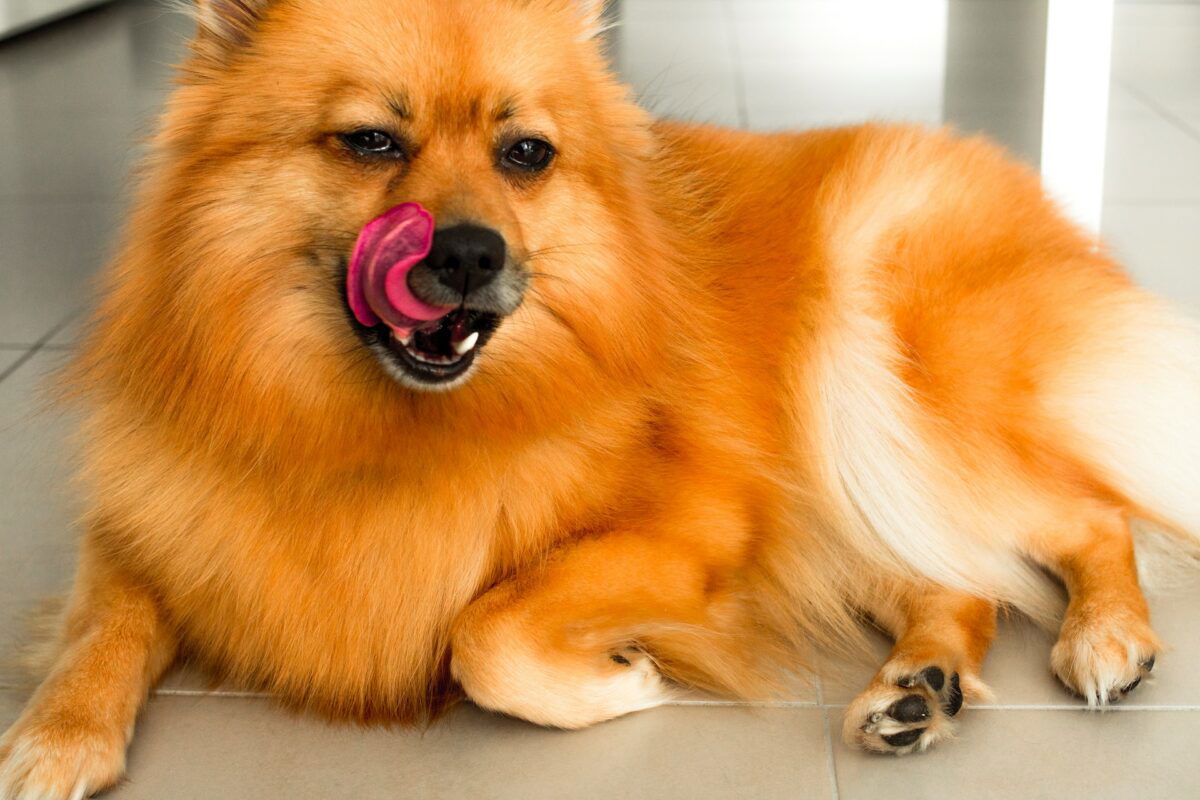
These canines are bred for their longer snouts and pointy heads. Despite being bigger than the modern Pomeranian types, throwback poms are still considered small dogs.
Throwback Pomeranians have similar fluffy coats to the other types and they also share similar temperaments, but still, they are not considered to be that cute.
Pomeranian Physical Characteristics
1. Size and weight range
The average fully grown standard Pomeranian male has a size range of 7 to 12 inches while their female counterparts stand 6 to 11 inches off the ground.
In terms of heaviness, a healthy adult Pomeranian weighs between 4 to 7 pounds while their female colleagues tip the scale within the range of 3 to 6 pounds.
2. Coat colors and texture
Pomeranians are a true definition of chameleons when it comes to coat color and pattern. The wide variety of AKC-recognized coat colors of Poms are:
- Beaver
- Beaver Sable
- Black
- Black and Brindle
- Black and Tan
- Blue
- Blue and Tan
- Blue Brindle
- Blue Merle
- Blue Sable
- Brindle
- Chocolate
- Chocolate and Tan
- Chocolate Merle
- Chocolate Sable
- Cream
- Cream Sable
- Orange
- Orange Sable
- Red
- Red Sable
- White
- Wolf Sable

Pomeranians can also have the following markings on their colored coats:
- Brindle
- Irish
- Mask
- Merle
- Parti-Color
- Sable
- Tan
- Tri-Color
- White
Pomeranians’ double coat texture can simply be described as luxurious since it gives a soft feeling to the hand comparable to that of fine silk.
The poms’ top coat is very long and straight, which helps them create the iconic ‘fluffy’ appearance that sets this breed apart from the rest.
3. Distinctive features
The Pomeranian dog breed has a set of distinctive features that make them instantly recognizable by canine enthusiasts.
These little charming canines have foxy faces, and expressive dark set of eyes, crowned with pricked-up ears that speak about their attentiveness.
The luxurious puff of soft fur around the neck and chest of Pomeranians cannot go unrecognized even from afar distance.
The Pomeranians are uniquely identified by their plume-like tail which usually arches over their back to exude elegance and confidence while walking.
Pomeranian Temperament and Personality
Pomeranian dog breeds are well known for their sparkling energy, unwavering loyalty, and sense of protection towards their human families.
Poms are very eager to learn new tricks which makes them a good candidate for obedience education and command training.
These little canines are also known to show significant levels of territoriality, so you can expect them to bark at a visitor or when they detect something unusual in their homes.
If you already have other pets in your home, we recommend socializing your Pom with them since they can show aggression as they try to prove their dominant status.
Pomeranians are good with children. These tiny pooches can create friendships with toddlers, especially those who can match up their inclination to play interactive games.
Pomeranian Intelligence
Pomeranians are not only playful pups but they also show impressive mental capabilities than most other dog breeds.
Dr. Stanley Coren’s research on ‘The Intelligence of Dogs’ placed Pomeranians as the 23rd most intelligent dog breeds out of 138 breeds tested.
This means that Poms would require just enough repetition when training them for obedience and working roles.
Pomeranian Health and Lifespan
Average lifespan
The average lifespan of a well-raised standard Pomeranian falls within the range of 12 – 16 years.
Most unofficial Pomeranian breeds may come short of this life expectancy period because of their likelihood of developing breed-related conditions.
Common health issues and genetic disorders
The following are some of the common Pomeranians health issues that can shorten their life expectancy:
- Patella luxation
- Tracheal collapse
- Heart diseases
- Idiopathic epilepsy
- Idiopathic hypoglycemia
- Cataracts
- Hypothyroidism
- Coat loss
- Pharyngeal Gag Reflex
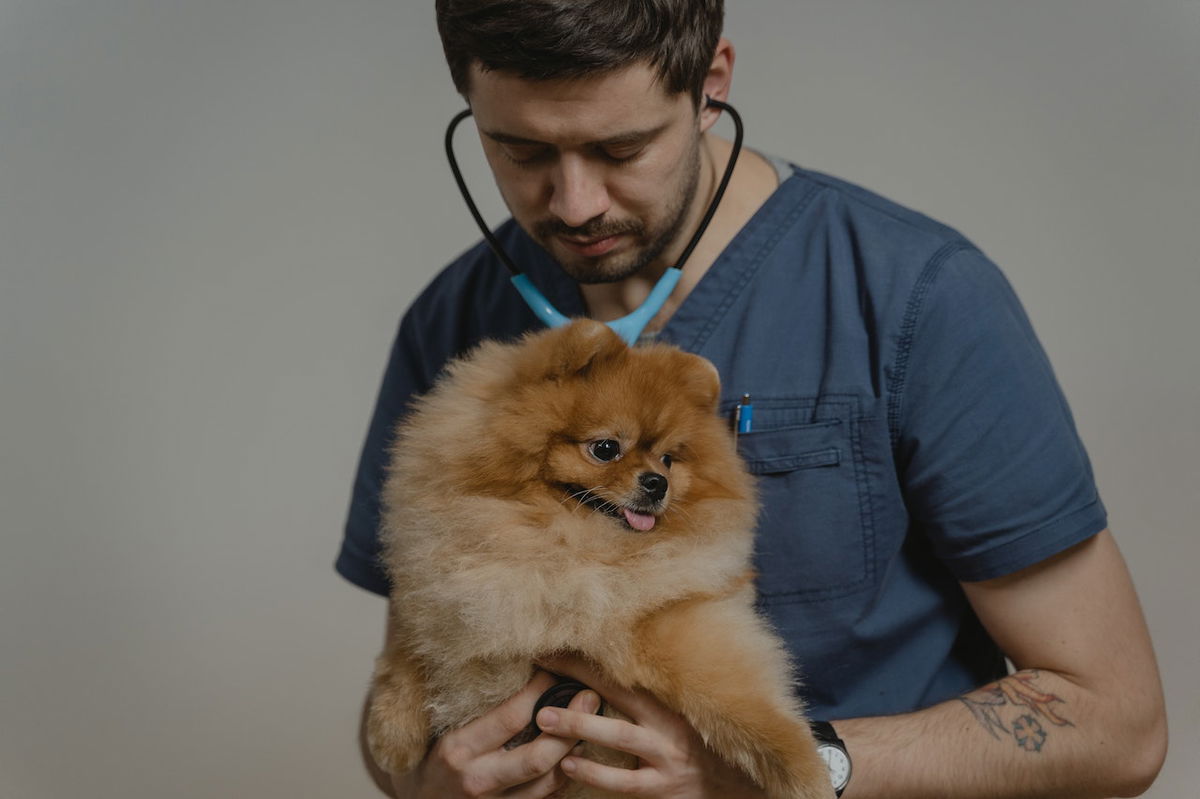
Preventative measures for good health
To ensure you get a Pomeranian with a reduced likelihood of genetic conditions, we suggest you pick one from a reputable breeder who prioritizes the health of these charming canines.
Avoid backyard breeders who want to keep up with the demand for pocket-sized dogs and end up raising sickly Pomeranians due to shady practices.
Regular health exams by a qualified vet are ways of ensuring your Pom’s health is kept under constant watch. It is during these visits that chronic conditions can be detected early and treated.
Your vet will also inoculate your lovely Pom against infections and communicable diseases by keeping them updated on core vaccines and yearly boosters.
Maintaining a healthy balanced diet is also a nice way of ensuring your Pom lives a good life free from diseases.
Taking your Pom out for regular walks and runs can also help keep their bodies in good condition and prevent them from becoming overweight or obese.
Pomeranian and Allergies
Pomeranians have a thick double coat that sheds fur throughout the year, but heavy hair fall is witnessed during seasonal changes.
Allergic individuals need to watch out for pet fur and other potential allergens including pet dander, and protein from urine or saliva.
Pomeranian Grooming Needs
1. Coat maintenance
Daily brushing with a slicker brush is recommended to keep the stunning coat in top condition, free from dead hair, debris, fleas, and tough mats.
You can also use a finishing brush to smoothen your dog’s double coat and leave them with a soft and shiny appearance.
We recommend bathing your Pom at least once a month to keep them cleaned up and looking fresh. The exact frequency of bathing your Pom is dependent on other factors including health.
It’s best to use hypoallergenic dog shampoo when bathing your pom. Canine-specific grooming products should be gentle and made at the right pH for the dog’s skin.
Look for shampoo made with natural ingredients such as aloe vera, oatmeal, and essential oils such as eucalyptus and almond oil.
Be careful not to over-bathe your Pomeranian since doing so may strip off the natural oils from the skin and make it flaky or dry.
2. Ear cleaning
The pointed Pomeranian ears attract dirt and pathogens which can harbor the growth of deadly infections.
Use a veterinary-approved ear-cleaning solution to wipe through the internal part of your pom’s ear canal to remove dirt and germs.
3. Nail trimming
Large nails can make your Pom have difficulties in walking properly. It’s therefore good to trim their nails using a clipper or Dremel tool to make sure your dog walks properly.
4. Dental care
For a complete grooming procedure, make sure to brush your dog’s teeth using canine toothpaste and a soft toothbrush.
Keeping up with dental hygiene will clear bad bacteria from your dog’s mouth and prevent dental diseases.
Pomeranian Exercise and Activity Levels
Daily activity needs
Pomeranians do not need the intensive physical stimulations that large dog breeds require but they can do with a short daily walk to keep them physically fit.
These tiny breed dogs have the needed energy to perform moderate work put that doesn’t put lots of strain on their joints and muscles.
Suitable activities and games for Pomeranians
The following are some of the physically and mentally enriching activities you can tag your Pomeranians:
- Short walks and runs
- Hide and seek
- Training sessions
- Puzzle toys
- Doggy spa day
- Hallway fetch
- Treat dispensing toys
- Social play
Importance of mental stimulation
- Improved problem-solving abilities
- Slows down dementia in senior Pomeranians
- Improves the relationship between you and your pom
- Reduces boredom
- Reduces stress and anxiety
- Prevents destructive behavior such as chewing and scratching
Pomeranian Training and Socialization
Pomeranians have an impressive mental knack that makes them an easy breed to teach basic command and obedience.
The best time to start training your Pom is when you pick them up from a reputable breeder or an animal shelter.
Basic training should act like a form of communication that can be harnessed to make the best out of your canine companion.
We recommend working out an effective training program for your little Pomeranians in all their life stages. Feel free to plan your dog’s training program with the help of a specialist.
Remember dog training should be short, fun, enjoyable, and rewarding to ensure your dog gets the most out of every episode.
Social training should form the basis of the working plan. Ensure your dog is well socialized with every member of the family to improve their confidence in different situations.
Once your Pomeranian puppy is fully vaccinated, you can take them out to dog-friendly parks to socialize them with different people and pets.
Pomeranian Living Conditions
Pomeranians are little active dogs who are well suited for apartment residents and those who live in urban places.
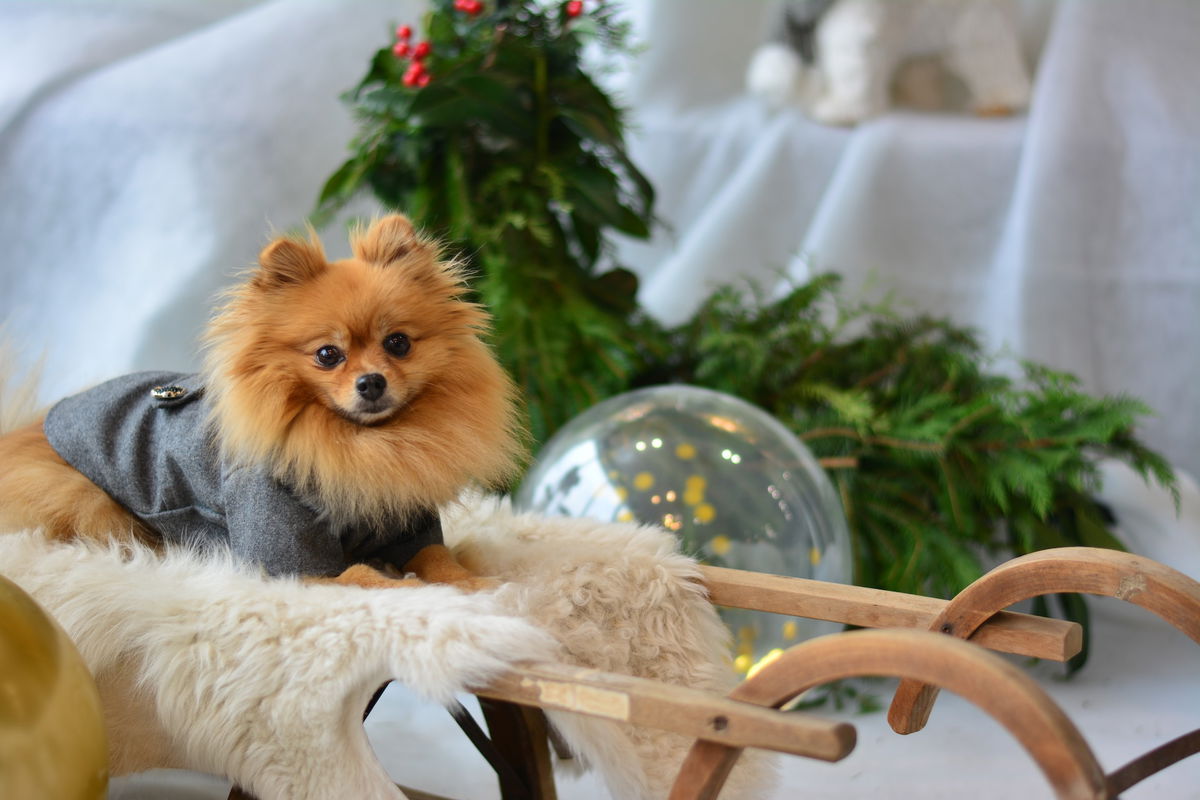
A fully furnished indoor area is more than enough for most Poms. Despite their inclination to thrive in apartments, poms can adjust to living in other spaces.
Pomeranian Diet & Nutrition
Pomeranians need a constant supply of high-quality foods and clean drinking water to keep them in optimum health.
Your dog’s diet should be monitored and adjusted at every life stage to ensure the best nourishment.
Puppies for example will require food supplies that attend to their growing bodies while senior poms will need a special diet for their aching joints.
For the most part, adult Pomeranians require home-prepared foods with a balanced ration of animal proteins and other essential nutrients.
You should limit the amount of carbohydrates your dog consumes per day since an excessive intake can lead to obesity and give rise to other chronic conditions.
Pomeranian Pregnancy & Litter Size
A healthy female Pomeranian can carry a pregnancy for about 58 to 70 days, with most of them delivering after about 60 days.
It may help to call a vet if your expectant Pomeranian has not given birth after 71 days of pregnancy.
On average, Pomeranian litter can have anywhere between one to five puppies, with some extending beyond this range.
Conclusion
Pomeranian dog breeds are charming and fascinating, to say the least. These wonderful tiny breed dogs can make a good pet companion for most families including those with kids.
Poms are small but they are energetic and they need moderate amounts of exercise to keep them healthy.
If you are planning on getting a Pomeranian dog from breeders, double-check the breeder’s reputation and online reviews to find out if they prioritize health over size and aesthetics.
Laura is the founder of Furs'n'Paws. She is a also a pet writer and expert with more than 20 years of experience of working with dogs and cats. She developed a very strong love for animals at a young age. Her passion led her to establish a thriving pet sitting and dog walking business in Dubai. As an expert in pet training, behavior, and nutrition, Laura is committed to helping pet owners and pet lovers by offering high-quality information on a wide range of topics.


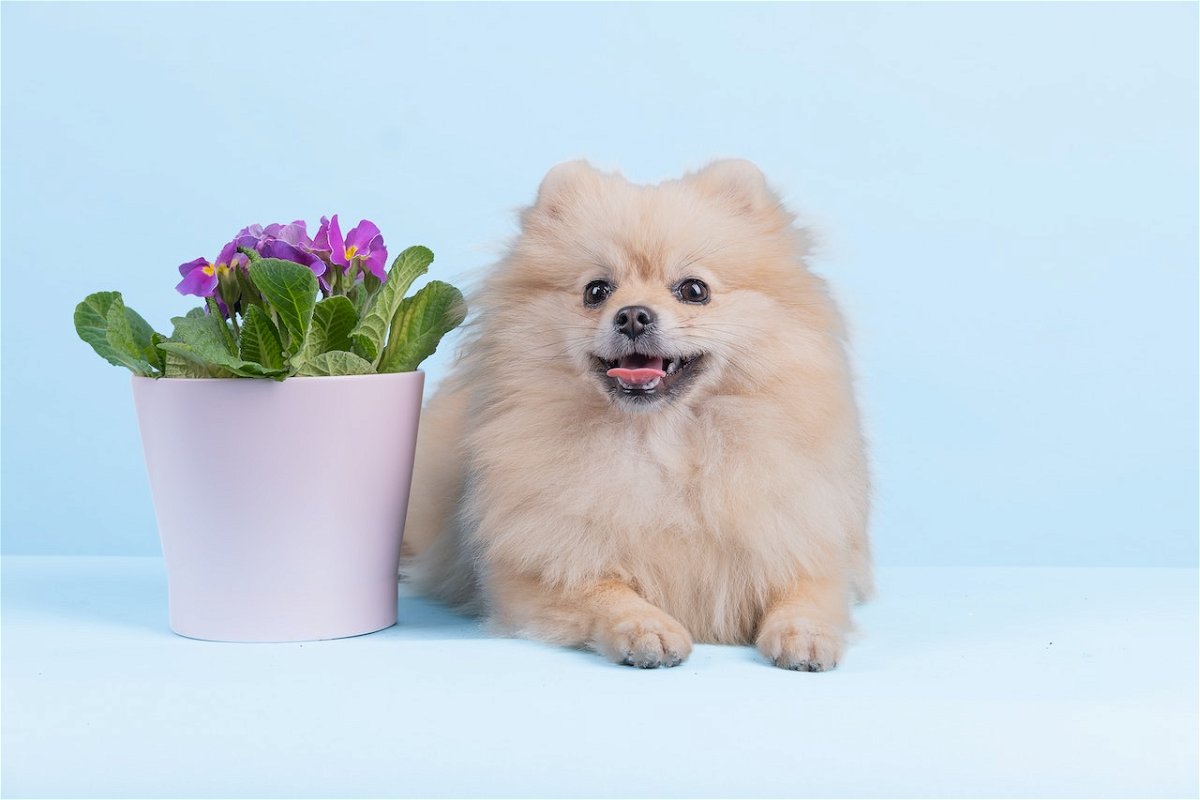
No responses yet